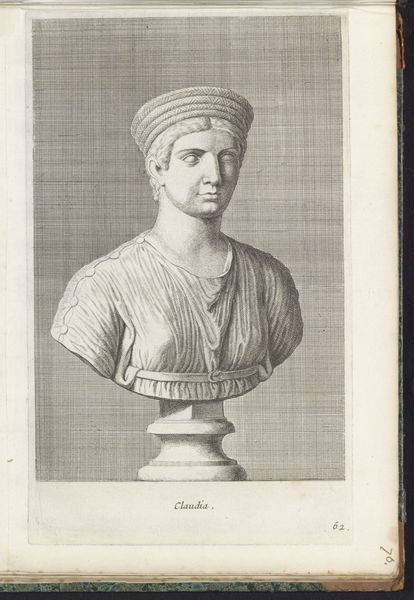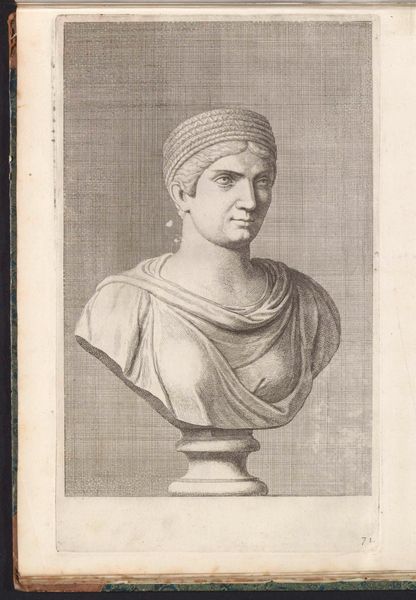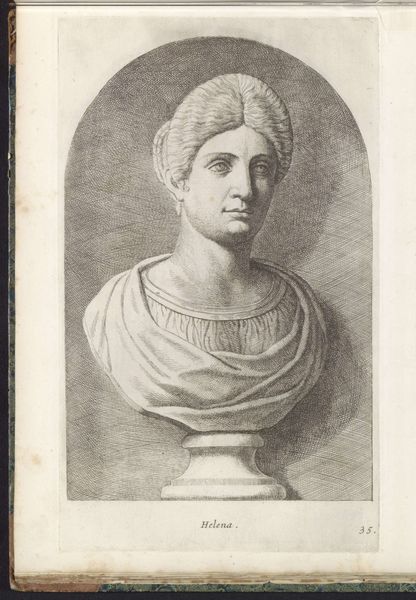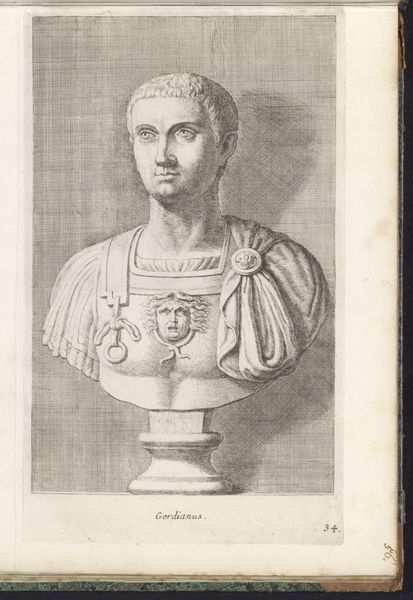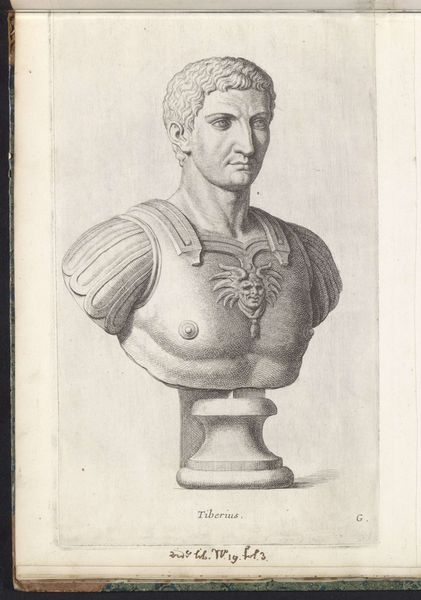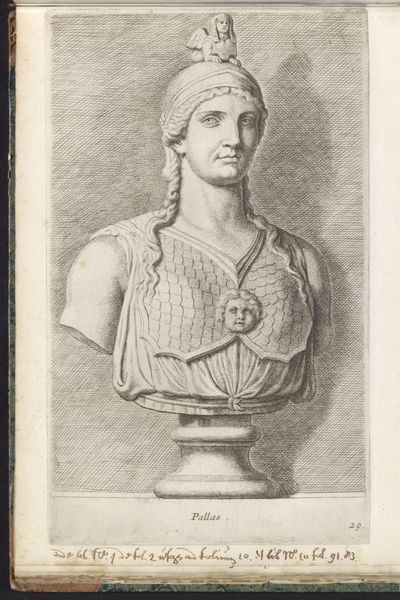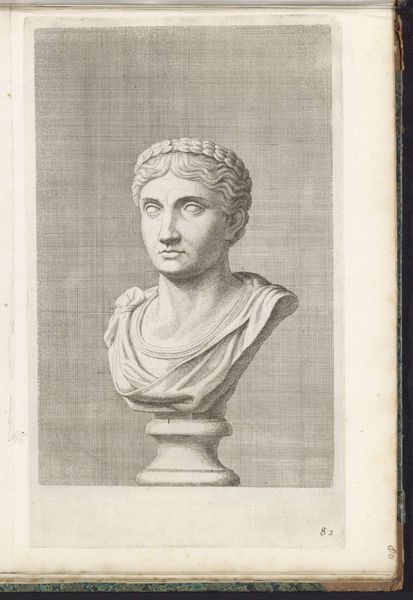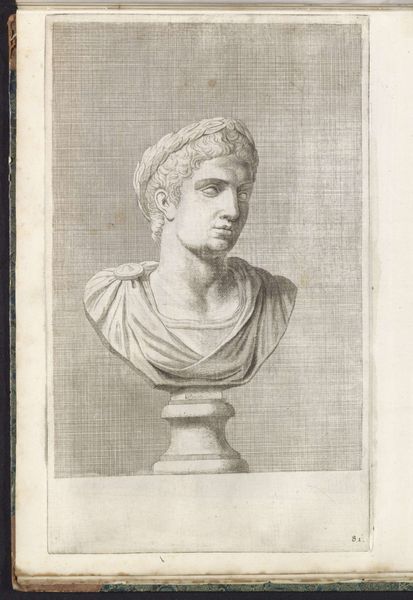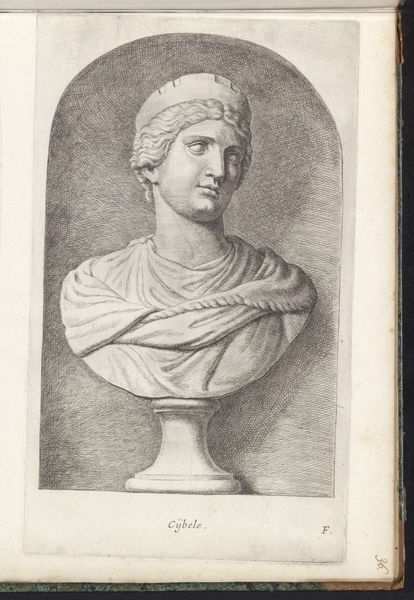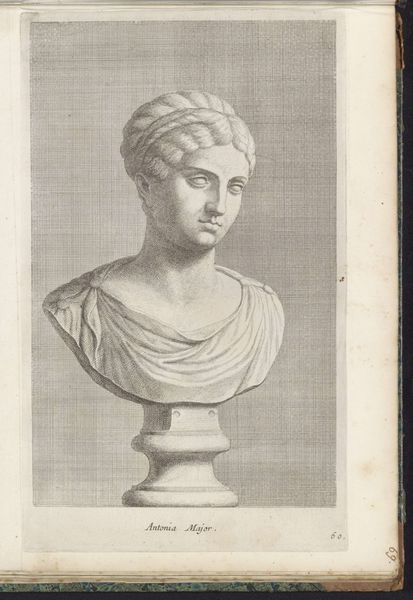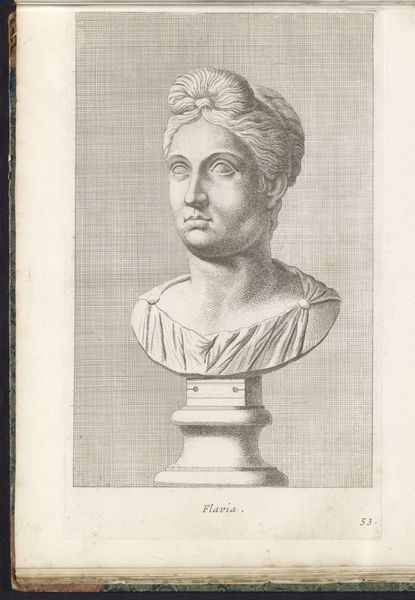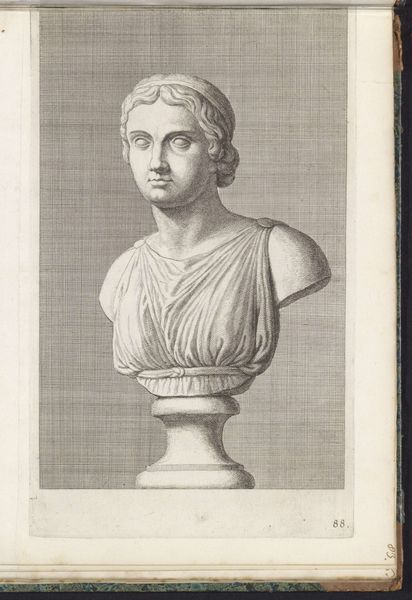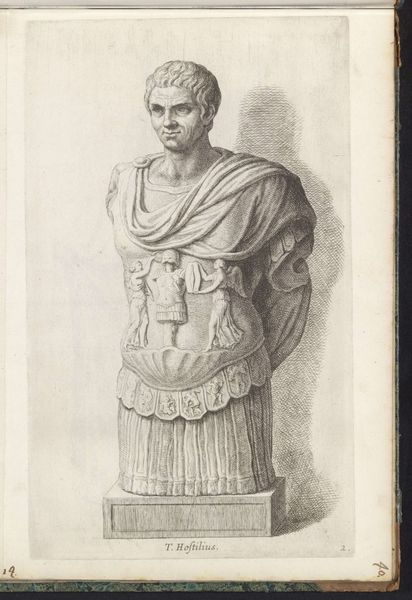
drawing, engraving
#
portrait
#
drawing
#
baroque
#
engraving
Dimensions: height 325 mm, width 198 mm
Copyright: Rijks Museum: Open Domain
Editor: This is an engraving of a bust of a woman named Flavia by Hubert Quellinus, dating from 1646 to 1670. The level of detail given just through line work is incredible! I'm curious about how you interpret it. Curator: Focusing on the formal aspects, consider how Quellinus uses line to create texture and form. The hatching and cross-hatching define the contours of Flavia's face and drapery. Note, too, the linear patterns of her headdress. How does the arrangement of these lines contribute to your understanding of the artwork? Editor: It’s true, the varied directions make a convincing volume, giving the sense of real fabric. I'm wondering, what does the relatively smooth, unshaded background suggest? Curator: That smooth plane pushes the sculpture forward in space, doesn't it? Look closely at how the bust itself is constructed; the drapery falls in gentle, repeated curves, echoed in the rendering of her hair. The overall effect is one of measured elegance, reinforced by the stable, geometric pedestal. Are there contrasts you see in the forms represented? Editor: The regular lines of the headdress, maybe? Compared to the flowing drapery? Curator: Precisely. And that interplay of controlled, geometric elements and softer, more naturalistic forms enlivens the composition. It prevents it from becoming static, suggesting a dynamic, underlying structure. Editor: So it's all about the relationships between the forms and lines. It really encourages close looking. Curator: Indeed, the composition asks us to analyze the relations between all aspects of what's included and what has been purposefully omitted. What new appreciation of the engraving did this exploration offer? Editor: Now I see more complexity. Before I was impressed by the single visual effect, but there's an entire system behind it. Thanks for pointing out that relation of simple elements that compose an effect.
Comments
No comments
Be the first to comment and join the conversation on the ultimate creative platform.
